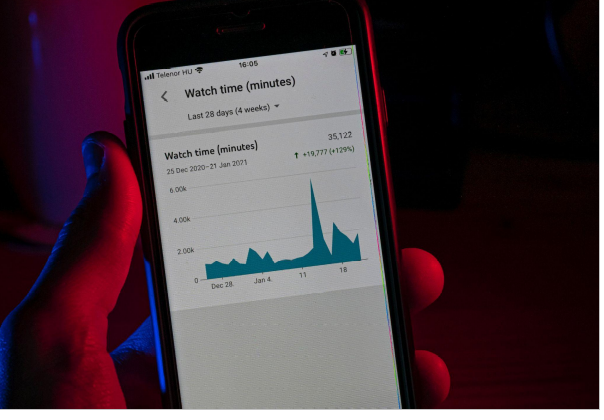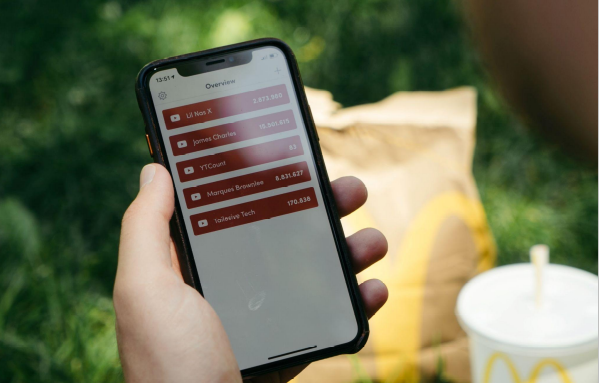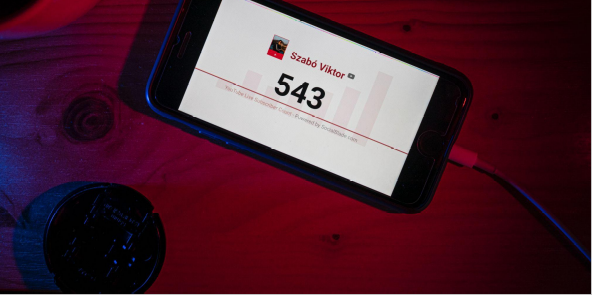Everything You Need to Know About YouTube Analytics and How to Use It for Your Channel Growth
Like most websites, YouTube has an analytics section that tells who is watching your video. You can look to the analytics to grow your YouTube channel for answers. First, however, you must know how to read the information and know what to do with them. How can you read these analytics and understand them? What do they mean, and how can you use these analytics to your advantage to create content that people will enjoy. This post will look at YouTube analytics and explain how the idea to pay for YouTube subscribers can help you while boosting higher platform positions.

First, What Are YouTube Analytics?
YouTube Analytics details essential metrics about your videos and your channel. With it, you can view your demographics by age, and location, see the most performing videos of all time, and more. In a way, these analytics tell you all about your audience, which is key to building your channel and growing, giving you a view of the types of people that see your content, and what interests them about your content so you can curate it.
The easiest way to access Analytics is to visit studio.youtube.com while signing in to your channel. Once you do, you can see your analytics as one of the options in the left-hand column. Click it, and you will see four tabs: overview, content, audience, and research.
You can also click on an advanced mode in the upper right corner, which gives you even more stats.
For now, let’s break down the four tabs.
Overview
You can see a recent performance of your channel. For example, you’ll see your total view count in the past month and your watch time and subscribers. You can also see what content is performing the best.
Content
This tab gives you a more detailed view of your content’s performance. You can see features such as how many views you’re getting and how many impressions you’re getting and learn where your audience is finding your content.
Audience
Here’s where you learn about your audience. For example, you can see how many viewers are unique, how many are subscribed versus unsubscribed and obtain demographic information such as the countries and ages of your audience.
Research
This tool lets you search for keywords and see what people are searching for. In addition, you can see what your viewers are searching for as well. This tab can help you develop better keywords to bring your audience to you.
Advanced Mode
In Advanced Mode, you can see many more features. For example, you can see the traffic source, subscription source, subtitles, and more.
Many of the features in Advanced Mode may be irrelevant to your channel, but they are still worth checking out.
What Analytics Matter?
As you soon learn, YouTube gives you a lot of analytics, which is a good thing. After all, knowledge is power. But sometimes, you may feel overwhelmed by just how much analytics there is that you don’t know where to begin.
Because of this, you should focus on a select few analytics, especially if you’re getting started. So let’s look at some analytics that matter.
Demographics
One of the critical steps in any business plan is to figure out your demographics. Knowing your audience’s age, gender, and location can give you a good idea of where to start marketing your videos. For example, use Facebook if middle-aged housewives enjoy your videos. Meanwhile, TikTok may be a good idea if your audience is under 25.
Demographics can also encourage you to change your content. For example, if you see that your audience is coming from India, yet you’re trying to market to US audiences, there’s something wrong you need to change.
Unique Viewers
Unique viewers describe audience members who consistently watch your videos. In addition, you can also see how many returning viewers you have.
On YouTube, the subscriber count paints only a small part of the picture. How can you improve your engagement if you have 1,000 subscribers yet are only getting 50 views per video? One way is to tell your viewers to ring the bell for notifications. In addition, you may need to change your content strategy.

Video Watch Time
As long as your videos get views, there’s nothing to worry about. However, that is only one part of the big picture. Not only should your videos have good views, but they need to have a long watch time. For example, say you upload a 10-minute video, but the average time watched is one minute. This tells YouTube that people are not invested in your video, and the algorithm might stop recommending the video to other people.
Overall Watch Time
Another analytic to consider is one on the overview, which is the overall watch time. This analytic describes how many hours people have spent overall watching your videos. When there is a high watch time, YouTube is more likely to recommend your videos to an audience, and vice versa.
What if there’s a low watch time? You may need to create more content or create longer-form content. That said, too much content can overwhelm your subscribers, and if the content is not engaging, they will back away from the video, damaging your stats.
Engagement
Engagement covers a video’s many comments, shares, likes, and dislikes. The more engagement a video has, the better. For example, if your video encourages discussion on specific topics, it can be good if your videos get that engagement.
Another thing to consider with engagement is the like-to-dislike ratio. Unless you intentionally made your video controversial, your video should have primarily likes. If there are dislikes, you should figure out why. Sometimes, you may need to improve a video’s quality. Other times, it may be due to the video not reaching its target audience.
This is why many YouTubers will tell you to like, subscribe, and comment. Doing so increases engagement. The more engagement, the more your YouTube channel will likely be promoted in the algorithm.
Impressions-Click Through Rate
This analytic covers how often people click on a video when they see it recommended to them on their YouTube feed. A video with an exciting title or thumbnail can prompt users to click on it; the click-through rate increases when they do. This metric should be combined with your watch time. If you have a high watch time but a low click-through rate, how can you figure out how to create an engaging title or thumbnail? On the other hand, if your video has a low watch time but a high click-through rate, it may not resonate with the people who clicked on it in the first place.
Audience Retention
This metric describes people returning to watch your videos after seeing one. You want a loyal audience when making videos, and a low retention rate can tell you something is wrong.
The case of low audience retention could be due to you not prompting your audience to like, subscribe, and click that bell for notifications. In addition, it may be due to you not recommending other videos to watch.
Sometimes, it could be caused by your videos not making people want more. How can you resonate with an audience and get them to watch more? That’s something you must figure out.
Re-watches
This metric describes the most watched parts of the video. For example, if you have a funny video, people may rewind it to see the punchline a few times before leaving the video. If your video is educational, someone may rewind it if there’s some valuable information.
In addition, YouTube has a feature on the video’s progress bar that tells you what parts are the most replayed, which can be used for valuable insights.
When Your Viewers Are on YouTube
This feature is crucial because your audience is likely to view your content when it’s posted, especially if you’re doing live content. This can be a problem if you’re targeting a nighttime audience and only getting the early birds or vice versa, this can be a problem.
If you cannot post simultaneously with your audience, one solution is to schedule your videos. This way, your audience can see them fresh and you don’t have to post them at the exact time.
Card Clicks
In your video, the card gives a viewer a call to action. For example, it can tell your viewer to watch another video, check out a sponsor’s offer, or for them to check out your website. How many clicks you see can tell you about the effectiveness of your call to action.
You want it to be high. But what if it isn’t? Then, you can figure out where to place the card and other factors.

Advanced Metrics You May Want to Try
As mentioned, YouTube has advanced analytics. While they aren’t as vital, some analytics may be worth checking out. Here are three of them.
Traffic Source
This describes where your viewers are coming from. For example, some will come from YouTube searches. Others may recommend the video in the algorithm, or if you are uploading a Short, through the Shorts feed.
When you know where your viewers are coming from, you can focus on improving that source more. For instance, you can improve the keywords and tags in your videos.
Device Type
This feature describes what device a person is using to watch your video. Mobile, TV, computer, and tablet are just some examples. While this is not a crucial metric, you may want to make adjustments depending on the device used. For example, if your audience is primarily mobile, you may want to have more audio-focused content and incorporate Audio Ads on your channel.
The Algorithm is King
When trying to promote your content, you must listen to your analytics, as positive analytics favor the algorithm and vice versa.
With good analytics, YouTube is likely to promote your videos on their recommendations. Your videos may appear at the top of the search bar.
If your analytics aren’t doing well, listen to them. While we all have our ups and downs on YouTube, an algorithm that is consistently dipping can be bad news. It can even be difficult to recover if your slump gets too low. Your views will go down; thus, YouTube will recommend your videos to fewer people, dropping your views. It’s a tough cycle.
Therefore, you must pay attention to the analytics.
How Often Should You Check Analytics?
Ultimately, it depends on how big your channel is. More prominent channels may want to check their analytics every couple of weeks. With smaller channels, you should check your analytics once every month. A content strategy can take a while to get the views you want, so consider giving it a chance before you check your analytics.
Can I Buy Myself YouTube Subscribers?
Some people want to pay for YouTube subscribers to give themselves a boost. And this can be a great way to grow your channel! However, YouTube does not reward people who have high subs alone. So, in addition to having high subs, you need to create engaging content that your audience will love.
Buying subs can boost you, but you must do the hard work yourself. The truth is that there is no magic way for you to get YouTube famous. It would be best if you put in the hard work and use your money to get the word out when you can. Always remember that.
Final Thoughts
There are many ways to grow your YouTube channel, with one of the most crucial beings to look at your analytics. In the perfect world, you could make your videos, and the people would come. However, we don’t live in a perfect world, and you must treat your YouTube channel like any business. If something is working, keep doing it. If something is not working, scrap it or see how you can improve it. We hope that your YouTube channel reaches new heights. Good luck.




